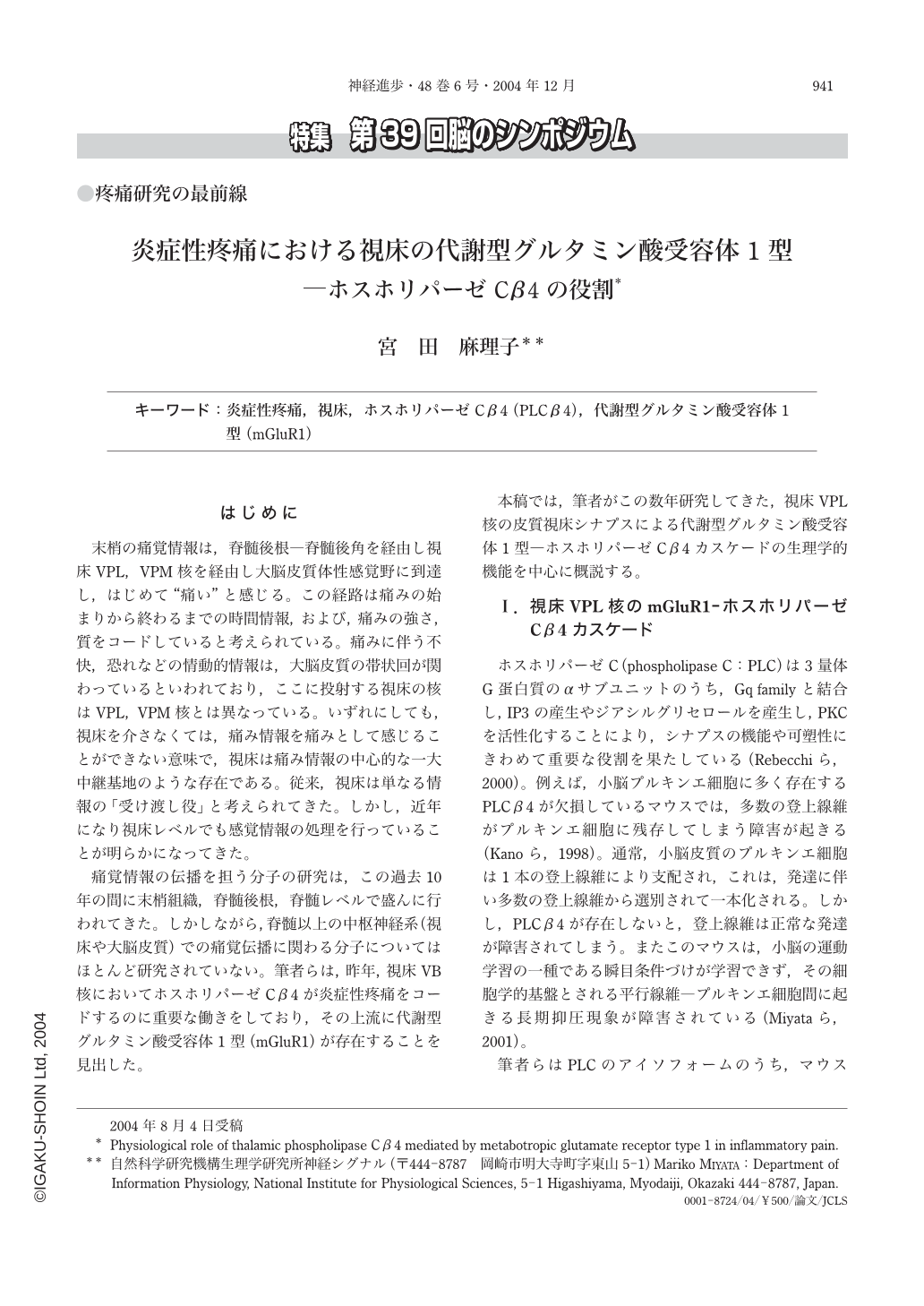Japanese
English
- 有料閲覧
- Abstract 文献概要
- 1ページ目 Look Inside
はじめに
末梢の痛覚情報は,脊髄後根―脊髄後角を経由し視床VPL,VPM核を経由し大脳皮質体性感覚野に到達し,はじめて“痛い”と感じる。この経路は痛みの始まりから終わるまでの時間情報,および,痛みの強さ,質をコードしていると考えられている。痛みに伴う不快,恐れなどの情動的情報は,大脳皮質の帯状回が関わっているといわれており,ここに投射する視床の核はVPL,VPM核とは異なっている。いずれにしても,視床を介さなくては,痛み情報を痛みとして感じることができない意味で,視床は痛み情報の中心的な一大中継基地のような存在である。従来,視床は単なる情報の「受け渡し役」と考えられてきた。しかし,近年になり視床レベルでも感覚情報の処理を行っていることが明らかになってきた。
痛覚情報の伝播を担う分子の研究は,この過去10年の間に末梢組織,脊髄後根,脊髄レベルで盛んに行われてきた。しかしながら,脊髄以上の中枢神経系(視床や大脳皮質)での痛覚伝播に関わる分子についてはほとんど研究されていない。筆者らは,昨年,視床VB核においてホスホリパーゼCβ4が炎症性疼痛をコードするのに重要な働きをしており,その上流に代謝型グルタミン酸受容体1型(mGluR1)が存在することを見出した。
本稿では,筆者がこの数年研究してきた,視床VPL核の皮質視床シナプスによる代謝型グルタミン酸受容体1型―ホスホリパーゼCβ4カスケードの生理学的機能を中心に概説する。
Phospholipase C(PLC)β4, one of the four isoforms of PLCβs, is the sole isoform in the mouse ventroposterolateral thalamic nucleus(VPL), which is involved in pain processing. The mouse VPL has been also shown to express a high level of metabotropic glutamate receptor type 1(mGluR1), which stimulates PLCβs through activation of Gαq/11protein. It is therefore expected that thalamic mGluR1-PLCβ4may play a functional role in nociceptive transmission. We found the thalamic mGluR1-PLCβ4 cascade plays a crucial role on the inflammatory pain but not the acute pain by using the knockout mice and/or pharmacological studies. Furthermore, membrane potentials and spike activities are regulated by mGluR1-PLCβ4 cascade in VPL neurons suggesting that thalamic mGluR1-PLCβ4 cascade mediates the inflammatory pain by regulating the response of VPL neurons.

Copyright © 2004, Igaku-Shoin Ltd. All rights reserved.


